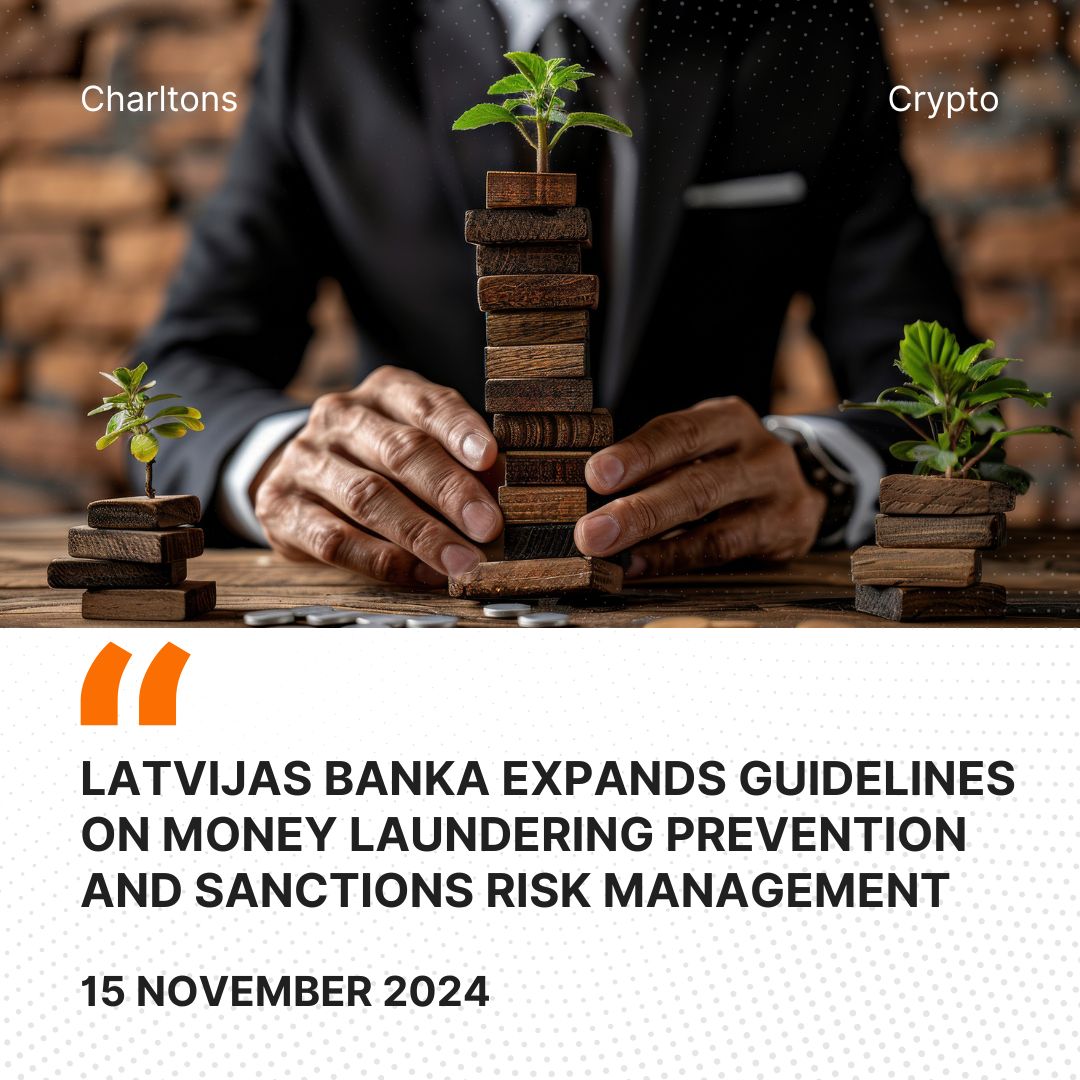
On 7 November 2024, Latvijas Banka announced an expansion and update of its Guidelines on the Establishment of the Internal Control System for Anti-Money Laundering and Countering Terrorism and Proliferation Financing and Sanctions Risk Management, and on Customer Due Diligence. The updates in the regulatory framework, clarify sanctions-related procedures, and incorporate new examples relevant to the current financial landscape. The revised guidelines aim to enhance the understanding and application of anti-money laundering and sanctions risk management practices across Latvia’s financial sector.
Latvijas Banka has introduced updates to the guidelines to address financial crime risks and improve compliance mechanisms within credit institutions and financial institutions. Updated section provides detailed guidance on how credit institutions and financial institutions should identify and manage risks when cooperating with other financial entities. This includes best practice examples for establishing and maintaining correspondent banking relationships, highlighting the importance of due diligence in such partnerships.
The guidelines now include specific instructions for foreign exchange companies, tailored to help them align their customer due diligence processes with their unique business models. These adjustments aim to strengthen anti-money laundering compliance in the foreign exchange sector. A newly added subsection offers practical advice for credit institutions and financial institutions on effectively assessing and managing risks associated with customers whose transactions involve crypto-assets. This addition recognises the growing prevalence of digital currencies and their potential vulnerabilities to financial crime. The sanctions-related sections of the guidelines have been clarified, taking into account changes in the competent authorities. The updated sections include practical examples and recommendations to help institutions comply with sanctions regimes effectively.
The guidelines are designed to serve as a practical resource for credit institutions and financial institutions, helping them deliver secure and accessible financial services while adhering to regulatory requirements. The guidelines aim to, foster a shared understanding of anti-money laundering obligations and promoting a risk-based approach, by strengthening internal control systems within financial institutions, enhancing customer due diligence procedures to align with varying risk levels and facilitate the prevention of financial crime across Latvia’s financial system. The guidelines include detailed explanations and practical examples to support institutions in implementing robust anti-money laundering measures tailored to their specific operations and risk profiles.
Latvijas Banka emphasised that the guidelines are updated regularly to address practical needs and align with regulatory changes. This iterative process ensures that Latvia’s financial sector remains adaptive to emerging challenges and maintains a strong stance against financial crime. The updated guidelines are accessible on Latvijas Banka’s official website.
(Source: https://datnes.latvijasbanka.lv/uzraudziba/AML-rokasgramata-latvijas-banka.pdf, https://www.bank.lv/en/news-and-events/news-and-articles/news/17083-the-guidelines-on-the-prevention-of-money-laundering-and-sanctions-risk-management-have-been-expanded)





